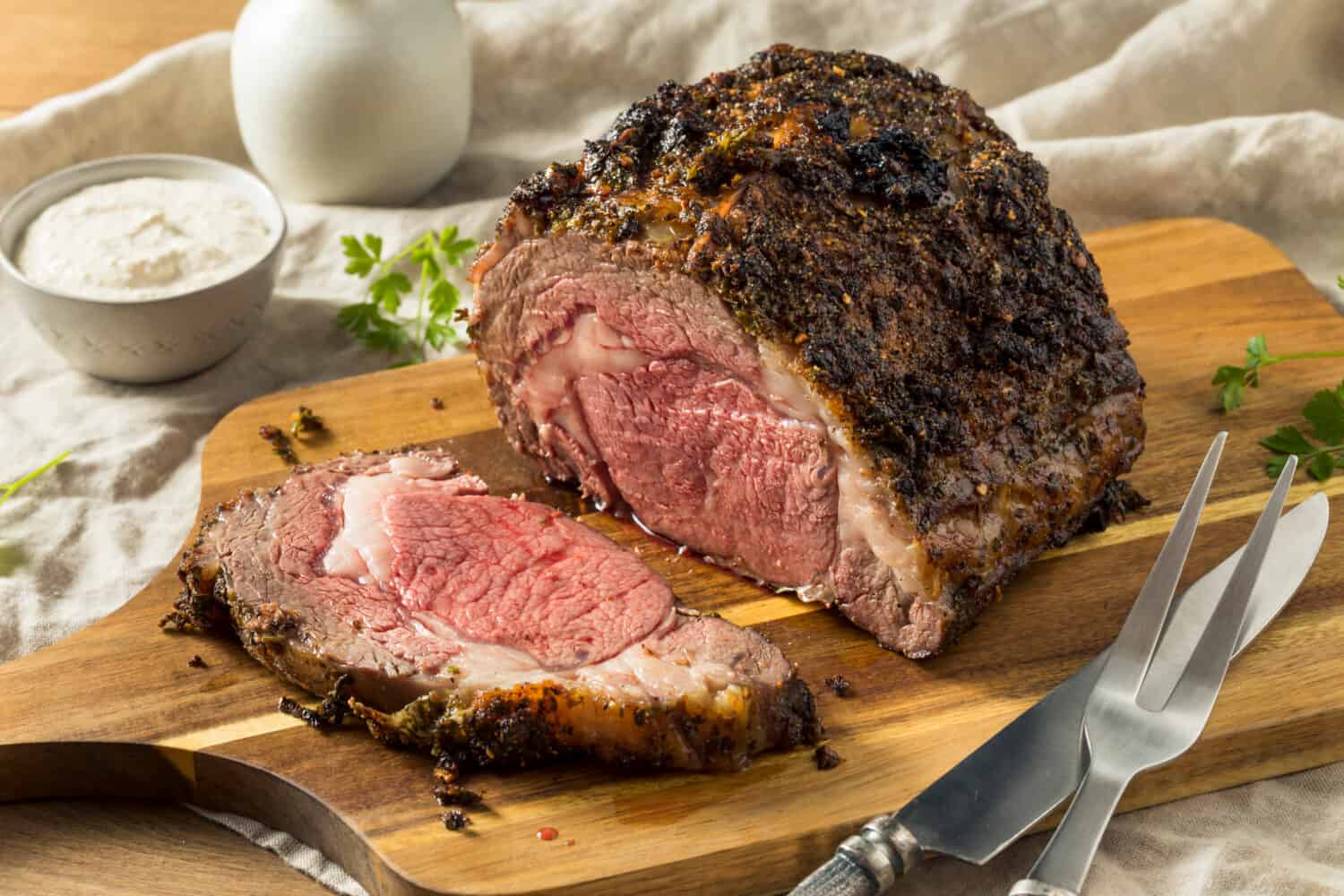Let's compare prime roast vs. prime rib! The differences come down to the cut of the meat, the cost of the cut, and the way each dish is prepared. While both cuts come from cows, a prime roast is cut from the meat on the side, and prime rib comes from the cow’s ribcage. Prime roast gets cut into typically smaller pieces whereas prime rib stays the size at which it was cut. As with most cuts, bone-in selections are less expensive than boneless cuts. For this reason, prime roast cuts cost more than prime rib. They can require slightly more processing from a butcher. As you can see, there are a number of factors that set prime roast apart from prime rib.
In this post, read on to learn about the way in which these dishes are cooked. You’ll get to know the history of these dishes, and how they’ve developed over the years. Get some great recipe ideas, and settle once and for all the differences between these two dishes. We’ll discuss cost comparisons and preparation options. Try your hand at either dish with this useful breakdown of the major differences between prime roast vs. prime rib.
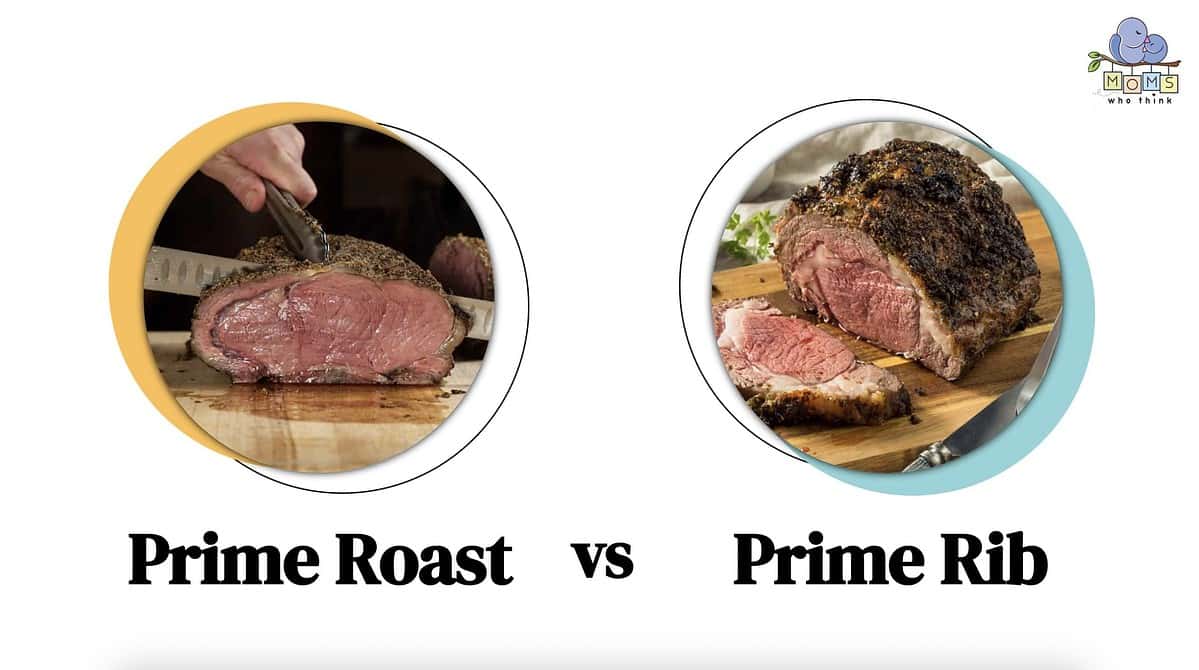
Prime Roast vs. Prime Rib: What is the difference?
Prime roast vs. prime rib comes down to three things. They differ in cost, size of cut, and the ways in which they are prepared. Prime roast cuts come from the side of the cow. Meanwhile, prime ribs come from the ribs of the cow. This, in turn, affects the cost of each cut. You can cook prime roast continuously in an oven. There are two methods for cooking prime rib. The first is in an oven on high heat. You'll reduce the heat over the course of the cooking process. The alternate method for cooking prime rib is called the “reverse sear.” This is where you start the heat on low and increase the heat to get the perfect level of “doneness” (via Delish). More on this method later!
What is Prime Roast?
Prime roast is a cut of meat from the side of a cow. Season your prime roast with pepper, salt, and herbes de Provence. Roast your prime beef in the oven til it's perfectly done and juicy. Prime roast can be made in several variations in terms of seasoning, which we'll get into promptly.
History And Origin of Prime Roast
According to Eater NY, the origins of prime rib roast can be traced to early feasts and dinners in Great Britain. On Sundays, the meat would roast in the oven while the family attended their church services. This left plenty of time for the meat to cook to perfection. The oldest restaurant in London, called Rules, would sell roast beef from a cart. It was during the Industrialization Revolution that sanitary butchering practices came into effect. This enabled more areas of the world access to high-quality meats. Prime beef roast spread to areas of the world including Australia, Ireland, and the United States (via Tony's Meat Market).
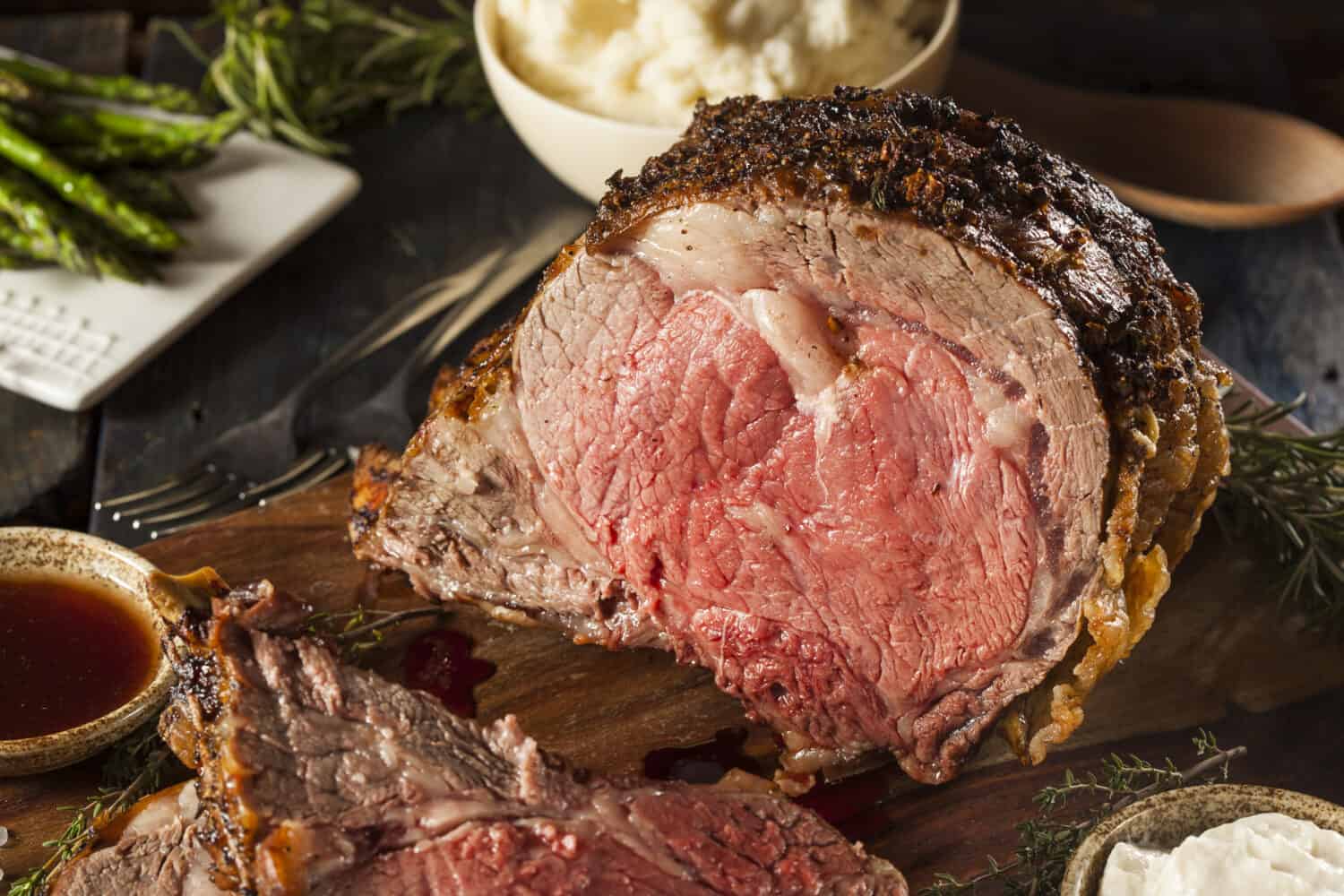
©Brent Hofacker/Shutterstock.com
How Prime Roast Is Made
For this recipe, you'll need a cut of prime rib roast. Keep in mind that the number of pounds will affect the cooking time. You'll need kosher salt, olive oil/or butter, and pepper. Optional ingredients include herbes de Provence, thyme, garlic, and Dijon mustard. Preheat the oven to 450°F. Make sure your previously refrigerated cut of meat has time to reach room temperature (1 hour). Season your meat with salt, and place in the oven for 20 minutes. Next, you'll need to remove the cut and reduce the heat to 350°F.
Combine your other seasonings, brush the coating over the pre-roasted meat, and place back into the oven. Roast for around 1 1/2 to 2 hours. Check with the instant-read thermometer for an internal temperature between 120°F and 130°F. Let the meat rest for 20-30 minutes, and carve your meat. Be sure to include the meat and the fact for the juiciest cuts (via Food & Wine Magazine).
Popular Variations
Other recipe variations include this version from All Recipes which features slightly different seasoning and cooking instructions. Check out some of these other prime roast recipes:
- The must-have convenient reference guide for every home cook!
- Includes more than 8,000 substitutions for ingredients, cookware, and techniques.
- Save time and money on by avoiding trips to grab that "missing" ingredient you don't really need.
- This is the Best Prime Rib (Roast) Recipe You’ll Ever Try
- Prime Rib (Roast) With Mustard Cream Sauce
- 18 Prime Rib (Roast) Recipes That'll Make Your Mouth Water
What is Prime Rib?
Prime rib comes from the ribs of the cow. Therefore it typically includes the bone of the cow in the roasting process. Keep in mind that it's called “prime” because of the cut, not the quality of the meat. While at the grocery store, be sure to check the USDA grade on the packaging before you buy.
History And Origin of Prime Rib
Like prime roast, prime rib also became more popularized after the butchery industry became more hygienic around the Industrial Revolution. Prime rib is also considered a roast in the sense that the whole cut of ribs roasts in the oven. The dryer the age of the beef, the more fat marbling you'll have. This, in turn, increases the flavor (via Insider) So now you know what to ask for to get some good prime rib.
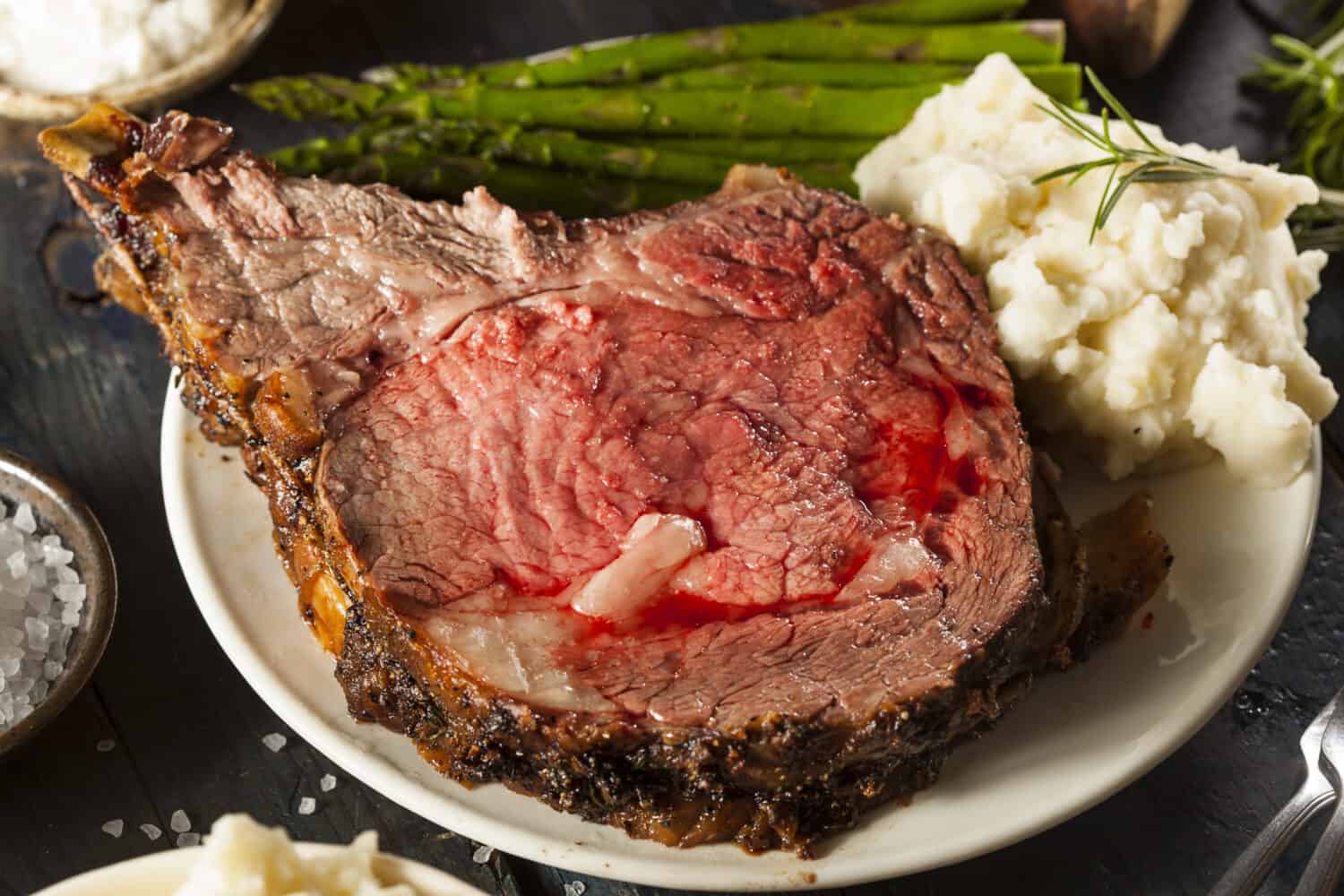
©Brent Hofacker/Shutterstock.com
How To Make Prime Rib
This recipe from Masterclass involves the use of a blowtorch and a meat thermometer. You'll need a center cut of prime rib and salt for seasoning. Truss the meat and you can also score it so the salt gets more absorbed by the cut as a whole. While some recipes call for pepper as well, Chef Thomas Keller's rendition encourages only salt because it changes the taste of the meat. This recipe involves a reverse searing method. This is where you start with a lower heat and then apply a much hotter heat to fully cook the meat in the final steps. Preheat the oven to 275° and roast for around 2 hours. Test the meat thermometer til the center reads around 128°F.
The blowtorch is what provides the intense heat. Torch all sides of the ribs until the outside is browned and roasted. Allow the prime ribs to rest for at least 30 minutes. It will continue to cook and check that the internal temperature hits around 132°F for a medium-rare roast. Next, you can make the optional horseradish cream sauce that goes along with this particular recipe. Carve up your prime rib, serve, and enjoy! This Certified Angus Beef recipe calls for seasonings like sea salt, dried basil, pepper, tarragon, garlic, and onion.
Nutritional Value of Prime Roast vs. Prime Rib
Consider this handy nutritional chart below. As you can see, 3 ounces of prime roast, compared to prime rib differ in calorie count, protein, fat, and cholesterol. The ways in which these dishes are prepared can affect all of these numbers. So if you're looking to cut down on fat and cholesterol content, consider the cut of the meat you are getting and the way in which you are cooking/seasoning it.
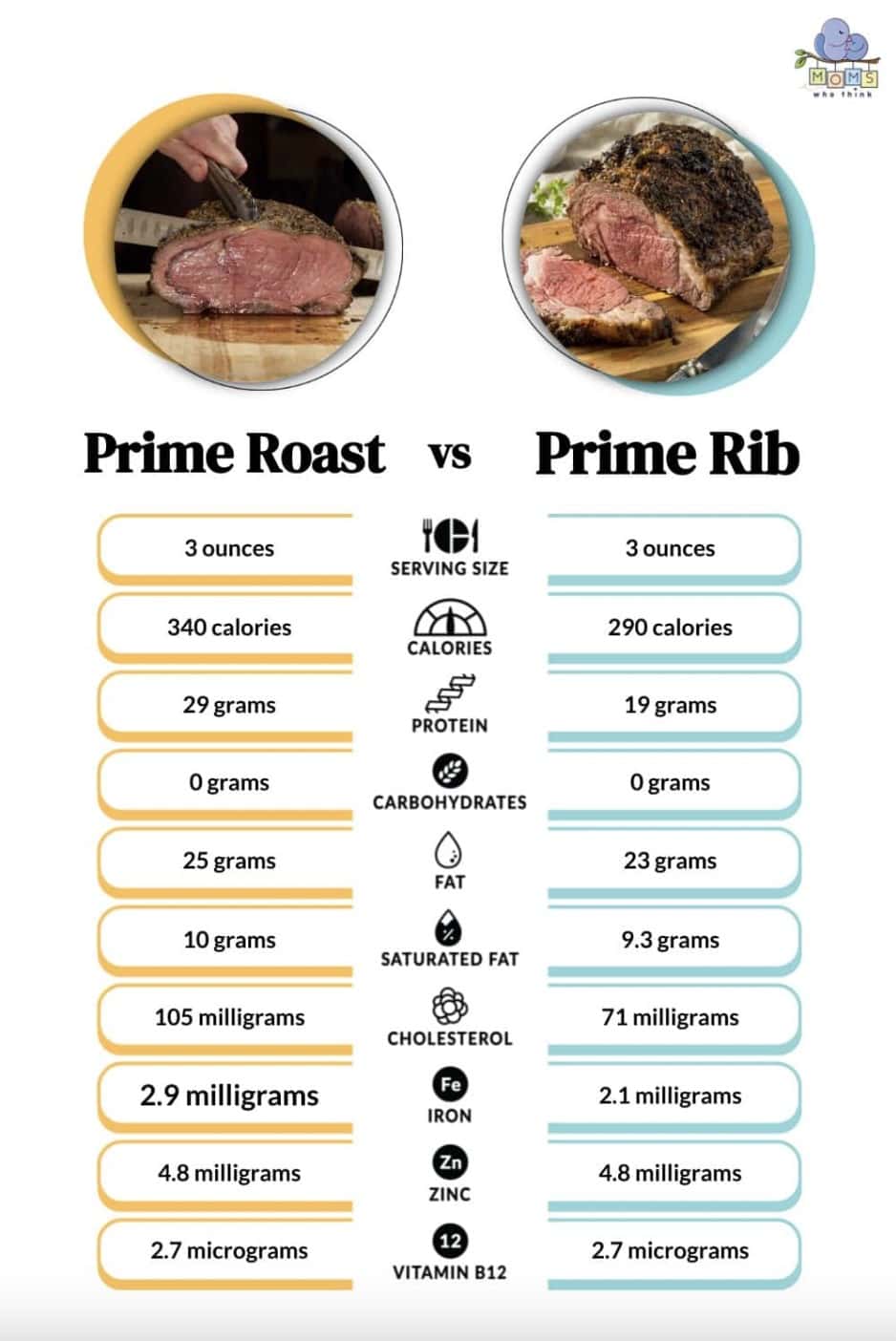
Possible Alternatives To Prime Roast And/Or Prime Rib
There are so many cuts of beef to try if these two aren't in your wheelhouse. From the ribs, you can have ribeye, which is the cut-up version of prime ribs. There's also bone-in rib roast, rib filet, cowboy steak, short ribs, and back ribs. There are cuts available from the loin of the cow, and the chuck (chest) of the cow. Try heartier cuts from the round (rump), the flank (underbelly), the shank (legs), and the brisket (lower chest). Needless to say, there are numerous cuts of beef to enjoy if prime roast and prime rib don't fit the bill for your particular needs (via Certified Angus Beef).
The image featured at the top of this post is ©Brent Hofacker/Shutterstock.com.
- The must-have convenient reference guide for every home cook!
- Includes more than 8,000 substitutions for ingredients, cookware, and techniques.
- Save time and money on by avoiding trips to grab that "missing" ingredient you don't really need.
